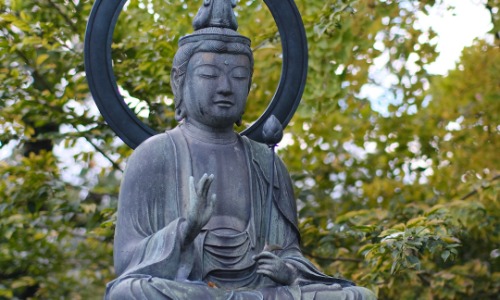In 538 AD, Buddhism was introduced to Japan.
Prince Shotoku promoted Buddhism as a political directive. This was because sharing a single teaching could contribute to the formation of the concept of a “nation”.
At that time, Buddhism was meant to protect the country, that is, to shield against rampant diseases that humans could not handle and natural disasters.
And that Buddhism was also something of the privileged class.
First, only the emperor and the ruling class could pray for national peace.
Second, in order to be saved by Buddhism at this time, significant personal training, time, and money were necessary.
The common people had neither money nor time to spare, and the only gods the common people could pray to were the gods of soil and rivers; they could not enter temples.
A new philosophy emerged in the 12th century (the Kamakura period). It’s more important to have faith than to donate money to temples or train in them, and ordinary people should be able to attain enlightenment and be saved, this was the idea.
Since Buddhism prohibits killing, fishermen and hunters were considered evil people.
However, if good people are to be born in paradise and saved, then the Buddha should save even those evil ones who should be saved, such as fishermen, with a heart of compassion, this was the thinking, and gradually the teachings permeated among the common people.
Separately, a Buddhist sect called Zen was also established. It is important to cultivate oneself, and to attain enlightenment through meditation, reaching a state of mind is what being saved means in Buddhism. This spread among the samurai class.
